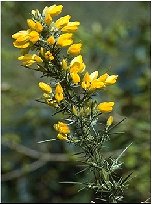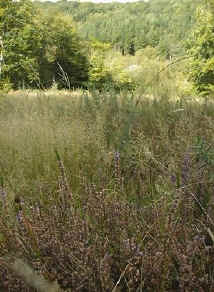|
The Woodland Education Centre |
|
|
The Woodland Education Centre |
|
Conclusions cont'd
| In contrast, the northern
sections adjacent to the control strip (6 - 9), showed clearly visible differences between
them, many of which were likely to be the result of differing management techniques. Sections 7 and 9 were the most clearly demarcated sections. In section 7, the initial use of Kerb granules to control grasses has had a significant effect on the vegetation. In the other sections, the main effect of brushcutting seems to have been the encouragement of the spread of coarse grasses. This had not happened in section 7 (which is also brushcut). The neighbouring sections, 6 and 8, were dominated by grasses, but in section 7, large swathes were covered instead in sedges and low gorse cover. |
 |
The predominance of sedges and
gorse in section 7 is presumably a result of decreased competition with grasses (although
it may also be environmental in the case of the sedges). Clearly, the initial application
of Garlon to control the gorse in this section has had little effect. left: gorse seems to be thriving where there is reduced competition from grasses. |
| Section 9, in clear contrast to all other sections, was dominated by Heather and by Polytrichum moss, which carpeted the areas in between the Heather and other plants such as gorse and tree seedlings. |
 |
Although this section has not
been cut, the gorse was much shorter and did not dominate as it did in the control
section. This may be a consequence of competition with the well-established Heather in the
region. So far, the only real difference in management between this section and the control section lies in the initial use of Roundup to control species likely to compete with the Heather. It is highly unlikely that this treatment has produced the enormously significant difference in Heather cover observed. It is instead, far more likely that environmental differences have been the major controlling factor in this case. left: Heather plants in section 9 of the Heathland Restoration site. |
The growth form of the Heather plants in section 9 was that of tall, rather straggly bushes. In contrast, in section 6, which is brushcut three times a year, the Heather formed low extremely dense clumps where it occurred. In time, this may favour the spread of Heather in this section because the dense compact growth form gives the Heather a significant competitive advantage over other species competing for space. While the different management techniques were clearly beginning to show measurable effects on the vegetation, the project site is still in the very early stages of heathland regeneration. It is too soon to predict exactly what effects the management techniques will have in the long run. Full restoration of a heathland area is likely to be a very long-term project. Changes in climatic and environmental factors with time will all affect how fast and how far the restoration proceeds. Over the last three years, the summers have all been very wet and there have been no droughts to influence the vegetation on the heathland site. The ericaceous plants (plants belonging to the family Ericaceae) typical of heathlands are all adapted to withstand dry conditions. Hot, dry summers, introducing drought conditions to the site, would greatly promote these species at the expense of others, less well-adapted. Long-term changes to the nutrient status and pH of the soil will also have significant effects on the plant community establishing on the site. For an article describing the heathland five years after regeneration click here.
|
Ecological Surveys 96 - 98 |